Morning Exercise for Kids — a Healthy and Joyful Moment!
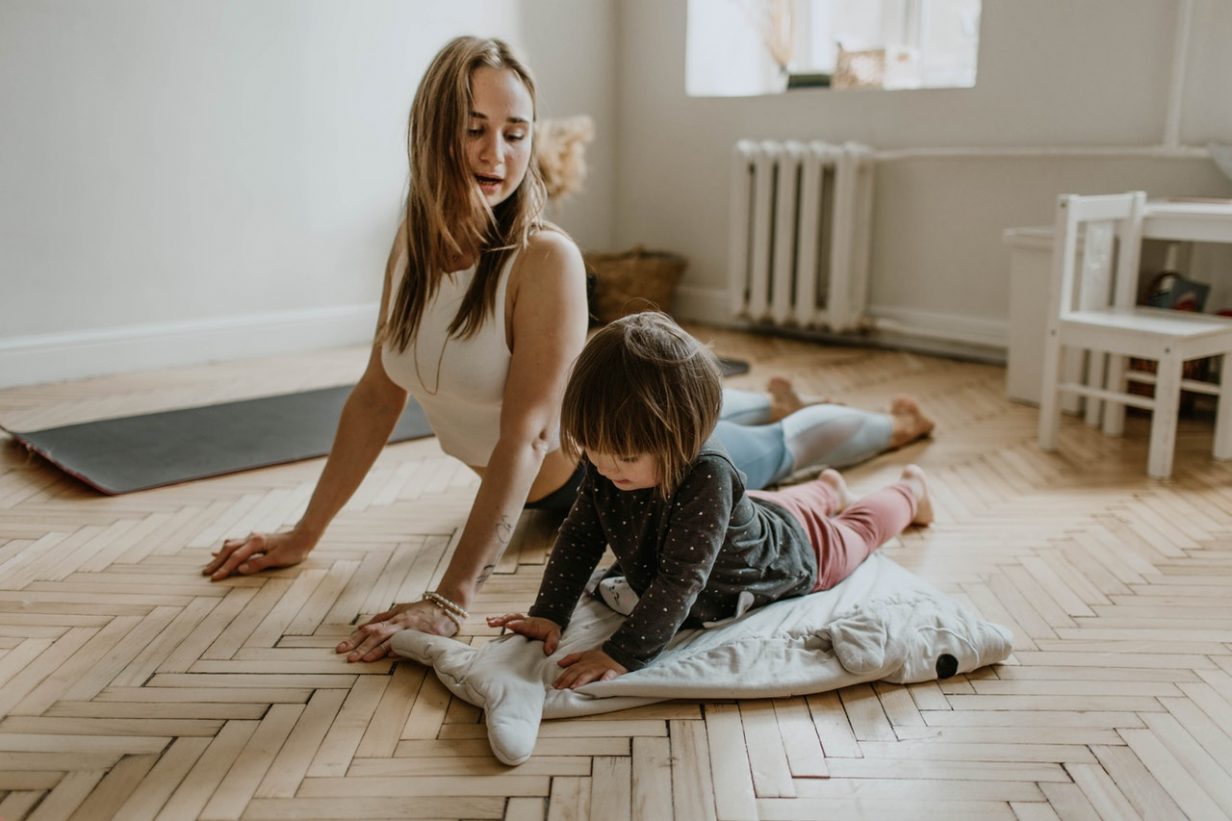
Did you know that movement helps children connect concepts to action? It’s true! Movement is a crucial part of a child’s development, yet in many classrooms, children must remain seated at a desk to complete their lessons.
A recent study called, Is Kindergarten the New First Grade found that children spend less time moving freely and more time in a passive learning environment than children in 1998.
The downsides to decreased movement in children are staggering, and the habits developed around such a sedentary lifestyle continue into adulthood.
So as a parent, what do you do? How can you help your children learn to love to move their bodies?
The answer lies in morning exercise for kids. When you create the space for them to enjoy a healthy and joyful movement, your kids will reap so many benefits and develop healthy habits that will follow them into adulthood.
Contents:
- Why Do You Need Your Morning Exercise?
- How to Spark the Child’s Interest in Physical Activity?
- What to Start With?
- Joyful Morning Exercises for Kids at Home
- A Couple of Useful Tips for Parents
Why Do You Need Your Morning Exercise?

Prostock-studio/Shutterstock.com
Regular exercise, especially on school mornings, is very important for growing children.
Preschoolers and children of school age do not lead an extremely active lifestyle as they mostly stay seated at desks during the day. Therefore, children often encounter issues with their posture, excess weight, and overall physical development.
Simple sets of exercises to be regularly performed in the mornings at home have a strong positive impact on the child’s body in the following ways:
- they strengthen the immune system which suffers the most from the lack of physical activity;
- they improve the functioning of the cardiovascular system: children who regularly perform exercises are less prone to the feeling of weakness, sudden changes in their blood pressure and fainting;
- they strengthen the core muscles to maintain a healthy back and a correct posture.
A few things need to be taken into account in order to make those exercises safer and more beneficial:
- maintain consistency: a positive effect can only be achieved through systematic exercising;
- do not overdo it with the duration of the exercise—children of the age of fewer than 10 years old need to devote no more than 10-15 minutes to their exercise routine;
- take the time to warm up: prepare the child for physical activity when they wake up by asking them to raise and lower their hands, perform circular movements with their wrists, and to squeeze their fingers together;
- perform the exercises outdoors if this is possible. If not—in a well-aerated room;
- try making the sessions diverse, whilst keeping in mind the age of the child: turn on some exciting music or a video lesson, add some new exercises every two weeks;
- teach your son or daughter to breathe properly, inhaling through the nose, and exhaling through the mouth;
- follow the principle of a gradual increase in the difficulty of the exercises and give your child at least two weeks to get used to the new level of physical activity;
- add a ‘finishing step’ to your exercise routine, for instance, stretching, walking or jogging on the spot.
The three prerequisites to safe exercise:
- Select comfortable pieces of clothing made from natural fibers and without any large seams, zippers, or buttons.
- When exercising at home, the child should be barefoot, however, wearing socks is mandatory.
- Prepare the exercise area: make sure the room has enough free space, remove objects that may potentially injure the child, and prepare all necessary equipment (gym mat, skipping rope, etc.).
How to Spark the Child’s Interest in Physical Activity?
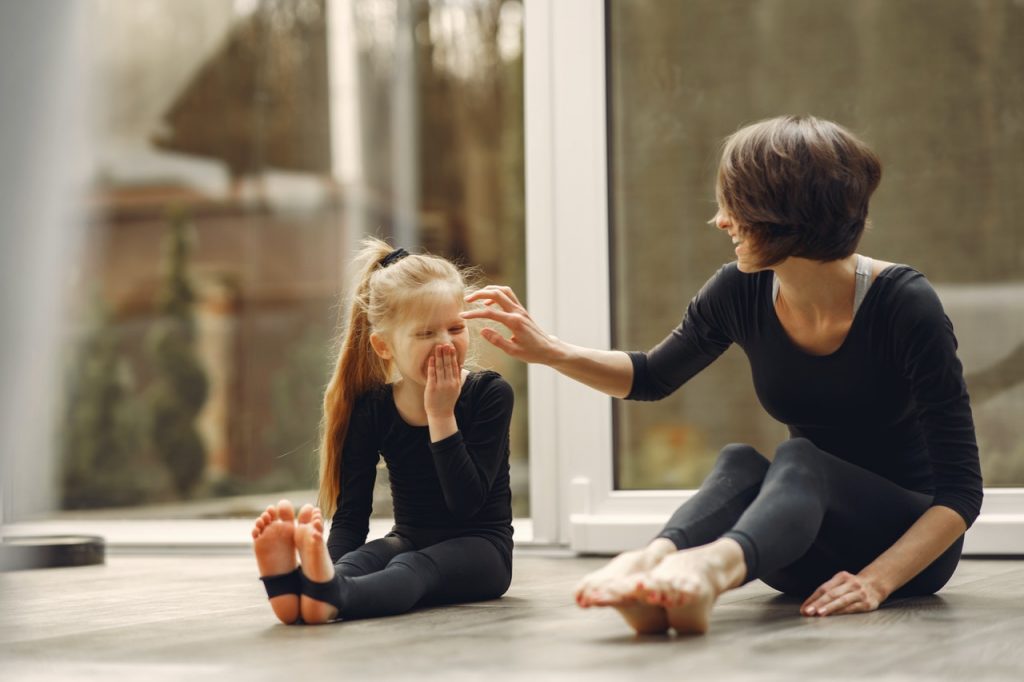
Prostock-studio/Shutterstock.com
Children of preschool age (6–7 years old) and of elementary school age (8, 9, 10 years old) are attracted to activities that aren’t outlined by adults as mandatory.
The easiest way to get kids involved in exercising is to start performing the exercises with them. A preschooler is most likely willing to imitate the adult, and an 8-10-year-old will display some interest in what mom or dad is doing.
Here’s how to spark a child’s interest in morning exercises:
- add game elements into daily tasks for children 6–8 years old. For example, imagine with your child, that you came onto a magic field. You need to wave your hands like a butterfly, bend over to pick flowers, and jump like a happy bunny;
- choose the right music. You can use the same music every time and focus on songs that the child likes;
- regular exercise sessions may sometimes (or always) be replaced with poems, especially for preschoolers. Appropriate poems may be introduced in the form of audio or video or even recited by you;
- praise the child when they successfully complete the set. Remind them that their bodies will become stronger and healthier.
A child who understands the purpose of exercising will perform them successfully. However, some children get so excited they exercise too intensely. As a result, they get tired and don’t feel sufficiently energized during the day.
Remind your child that the goal of the exercise is to awaken the body, not to tire it, and suggest creating a training plan with the following sections:
- create a daily plan before each session: the outline will contain a list of all exercises for the session and any additional equipment;
- the introduction of new exercises—put these together in the form of a table. Include the frequency at which these new exercises appear in the program;
- a long-term plan: for a week or for a month, with room to learn the set of exercises and to introduce new exercises into the set.
Outline the scheme of the exercise routine on a piece of paper and put it somewhere visible. Ask your child to outline what they plan to achieve. Their input into the routine will motivate them to train on a regular basis, without over-exercising.
Download the Findmykids app and get access to a range of features that help you ensure your child’s safety and health during morning exercises and beyond. From real-time location tracking to SOS alerts and geo-fencing, the app has got you covered. Take control of your child’s safety today and enjoy peace of mind with Findmykids!
A good method to spark the interest of a child whose physical activity has always been minimal is through walks during the warm periods of the year. During those walks, slow walking can be slowly replaced by a faster one, and then by jogging. When the child will get used to physical activity—they would most likely be willing to learn some new movements, and at this point, it would be the perfect time to add daily morning exercises into their routine.
What to Start With?
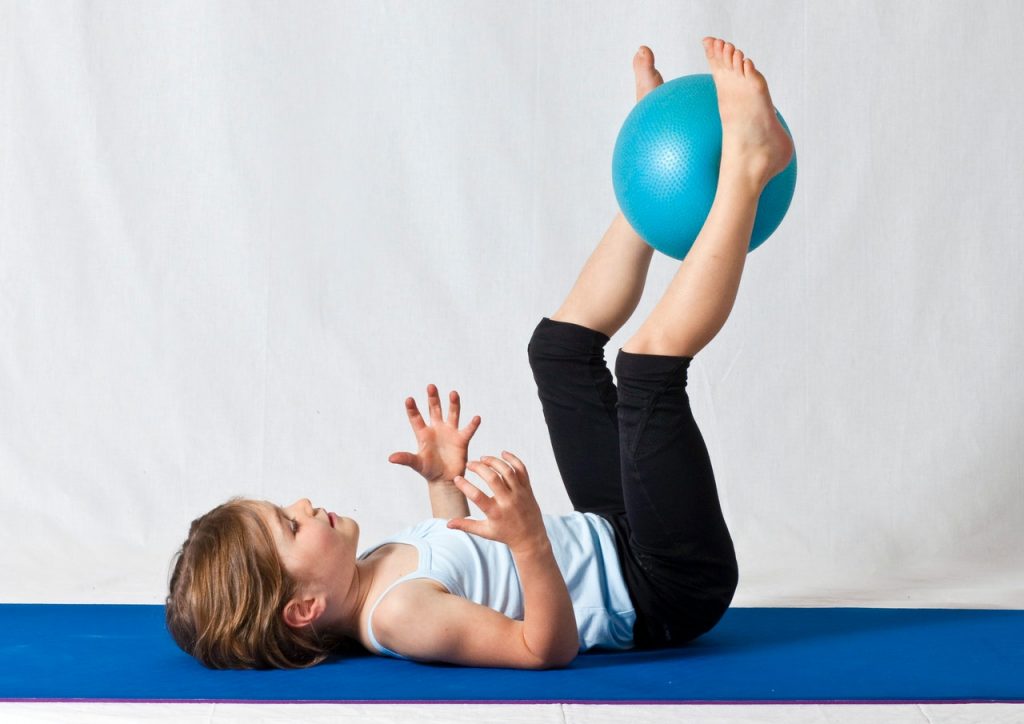
Prostock-studio/Shutterstock.com
Follow the correct timing for each exercise right from the first session. And make sure to eat breakfast with your child after the set is complete as part of your morning routine.
Here is how the child can maintain efficient timing during an exercise session:
- Respect the golden rule of any training session with a warm-up, workout, and cool down. The final step of the session is as important as all the other ones. Let the child finish off by slowly walking on the spot and with some easy stretching exercises.
- Set the correct pace: start at a slow pace and gradually accelerate to the exercises that require a higher speed. Remember to slow down step-by-step too.
- Keep in mind the principle of quality over quantity. It is better to perform five deep side bends, whilst maintaining good breathing than to perform twenty fast, shallow side bends, and forget about the correct technique.
Warm-up
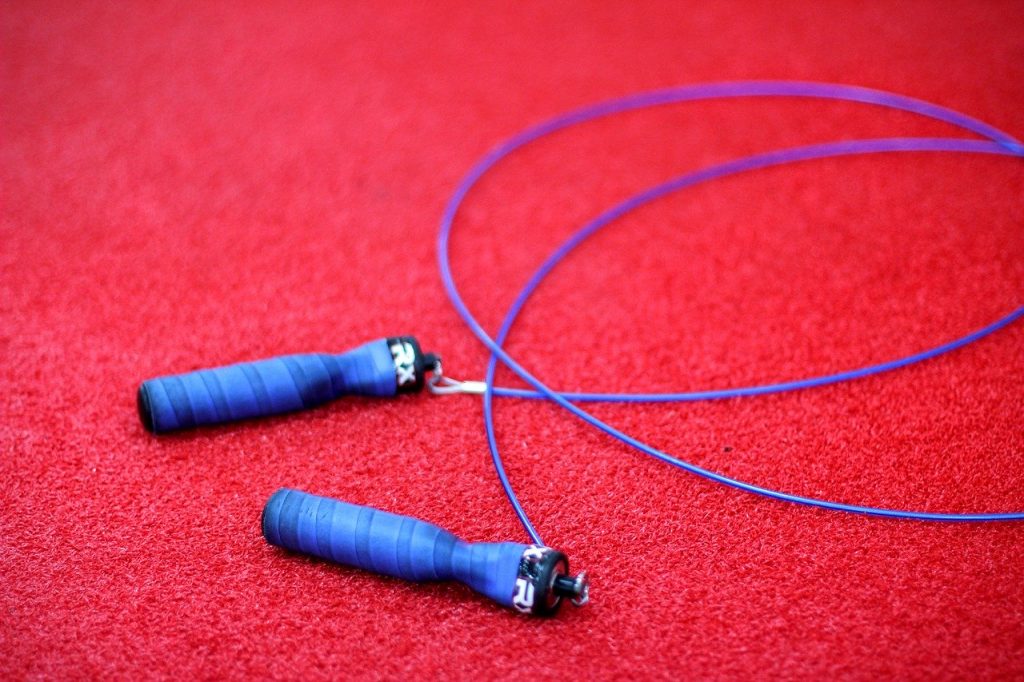
Prostock-studio/Shutterstock.com
The warm-up is needed to ‘heat up’ the muscles and the joints. If a person skips the warm-up and moves onto the workout right away, they significantly increase the risk of injury.
Here is an option for a warm-up for preschoolers. Devote around a minute per each exercise:
- walking on the spot;
- running on the spot at a moderate speed;
- arm swings.
Follow a warm-up with a preschooler with a brief explanation of the exercises for the session. Try telling a fictional story that leads up to the start of the exercise.
Here is an example of a warm-up option for an elementary school student:
- leaning from side to side: ask the child to place their hands on their hips. Perform the movement to the left, right, forward and backward;
- up on tip-toe (5 to 6 repetitions): on an inhale, have the child bring their arms to their sides and lift up toward the ceiling on their toes. Hold for a few seconds, and exhale;
- exercises for the arms and the shoulders: ask the child to lift and lower their shoulders, together, one-by-one, and then swing the arms;
- head tilts (4 to 6 repetitions): to the left and to the right at a moderate pace, and then gentle circular movements (clockwise and counterclockwise).
Here is an option for a short warm-up for kids:
Breathing Exercises
Breathing exercises have a beneficial effect on the functioning of the respiratory system and even the formation of the vocal apparatus.
Self-guided breathing exercises at home should start no earlier than the age of five years old, under the condition of respecting the following general rules:
- the child has to be in a calm and composed mood. They should not be upset, nervous or tired;
- the exercises are to be performed at a slow pace under the supervision of an adult;
- abrupt inhalations should not take place;
- it is particularly important to control the position of the child’s shoulders: they have to remain in a normal position- not up, nor down.
It’s a good idea to incorporate breathing exercises into your child’s morning sessions every day by, for example, finishing the warm-up off by breathing in through the nose and out, through the mouth.
Sets of breathing exercises to improve physiological breathing and speech breathing:
Joyful Morning Exercises for Kids at Home
Organizing exercises at home isn’t difficult. Add some joyful music and you’ll quickly see the results! Your child will adapt to their school workload, feel happier, and see an increase in orientation skills.
Basic physical activity contributes to the formation of the correct lumbar curvatures, a process which is finalized only by the time the child turns 11–13 years old. This is why morning exercise is crucial for preschoolers and elementary school students.
Incorporate exercises that are best suited to your child’s age and physical abilities. The exercises shouldn’t be overly complex, or the child will tire quickly and won’t want to exercise again.
Adding more complex movements such as the plank, the arm swings, deep squats, and any other ones, needs to be progressive and should be done after 7–8 years of age.
The list below contains some options for exercise routines for children of different ages:
- 6 years (a small soft pillow would be required) — https://www.youtube.com/watch?v=UfT0w7wsAvc
- 7–8 years old (no additional equipment is required) — https://www.youtube.com/watch?v=L_A_HjHZxfI
- 9–10 years old (a stability ball would be required — it may also be replaced with some other objects) — https://www.youtube.com/watch?v=Yb1C1QeY2y4
General Exercises for Children of 6–10 Years Old
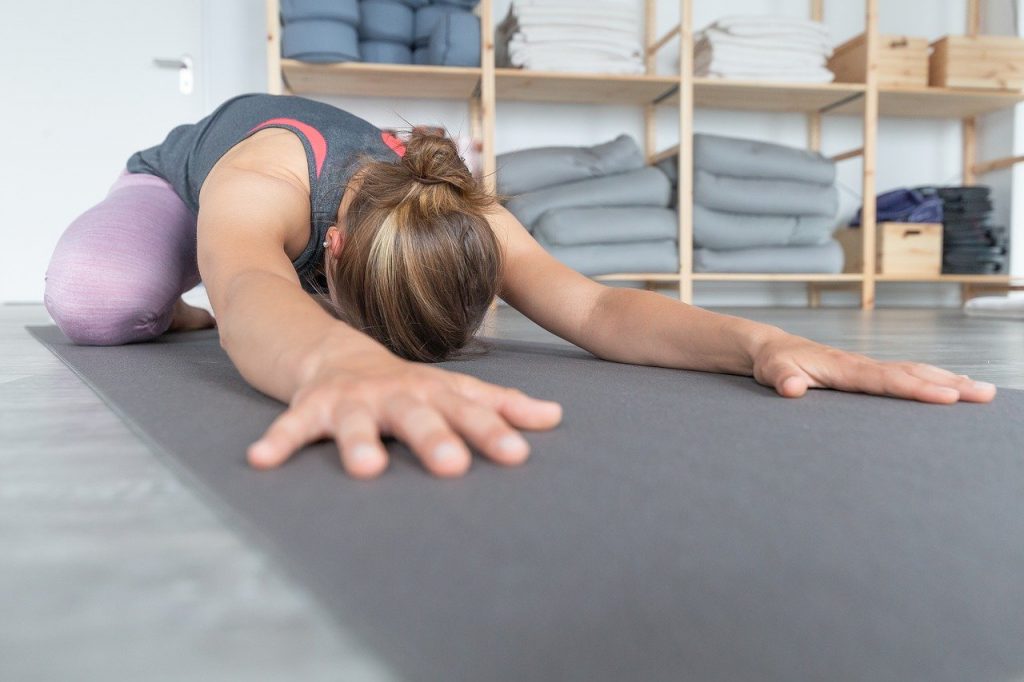
Prostock-studio/Shutterstock.com
A list of exercises for children 6 to 10 years old is presented below. You can create your own program from those options and add your own. Keep the duration of each exercise to around one minute:
- Walking on the spot. Keep an eye on the legs of the child: they do not need to be too far away from each other. Their arms have to be on their hips.
- Walking on the spot and raising the knees as high as possible.
- Squats by extending the arms to the front—this exercise is useful to strengthen the leg muscles and increase the mobility of the joints.
- Jumping Jack squats. With their hands on their hips, the child squats and jumps up when their arms are fully extended.
- Forward bend. A semi-bend down, followed by exhalation and then a full bend so that the child can touch the floor with their hands.
- Leg spreads to the sides. Bringing the arms to the sides from the standing position, whilst bringing one leg to the left side and then to the right. Legs need to be switched after that.
- Leaning towards the toes. Ask the child to reach out as far as they can.
- Jumps. On the left leg, then on the right leg, then on both legs. The exercise is finalized with turning jumps—at 90° and then at 180°.
- Leaning from side to side, to strengthen the muscles of the back, the torso, and the abdominal muscles.
- Lying leg swings in a supine position. The elbows need to be bent and the arms need to be lying on top of each other, the chin needs to rest on the palms of the hands.
Exercises to improve flexibility
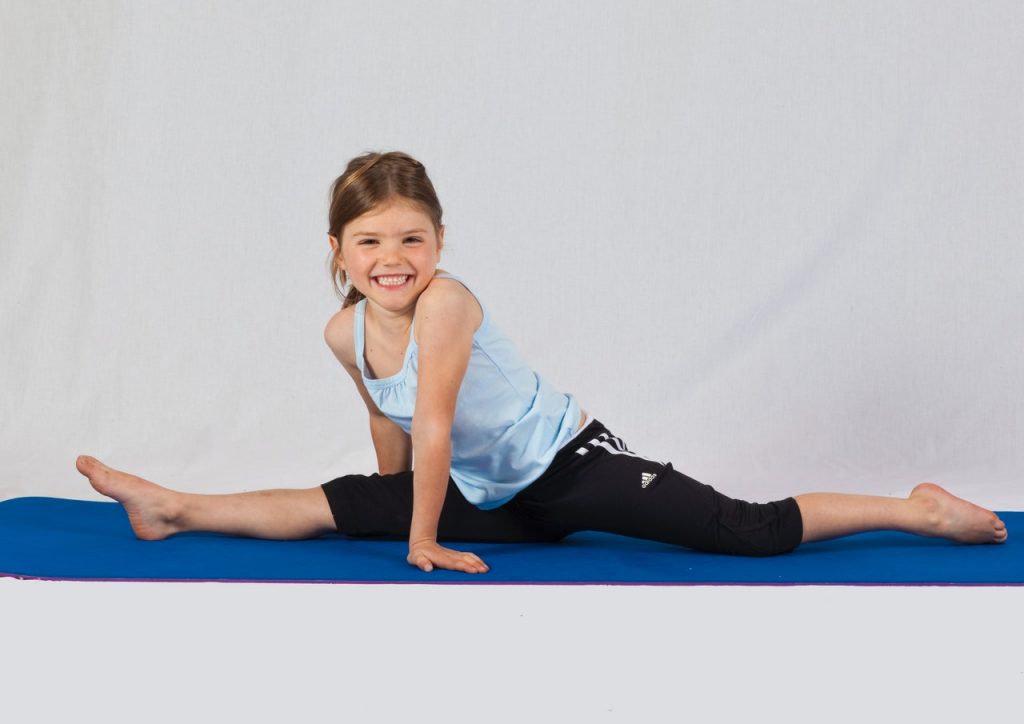
Prostock-studio/Shutterstock.com
- While sitting on the floor with their feet spread wide apart, the child will aim to reach their toes without bending the knees.
- The starting position is on all fours with the head down. The child will inhale, arch the lumbar region as much as possible and lift the head up. They will come back to the starting position as they exhale.
- The child will assume a standing position and will press their arms into the torso as they inhale, whilst trying to contract all of the muscles for around five seconds. As they exhale, they need to relax their muscles.
- Slow and deep squats on one leg, interchangeably.
- The child is standing and trying to move the right arm along the spine, whilst holding it with the left arm and creating a slight resistance and then switching the arm.
A Short Set of Exercises for Preschoolers
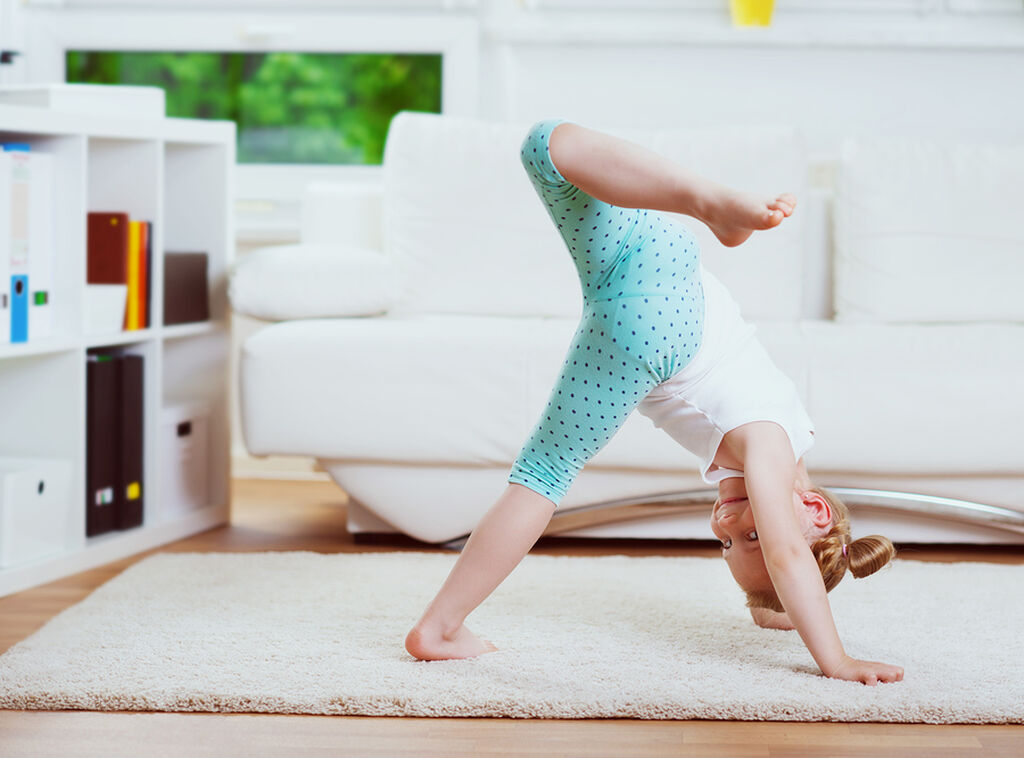
Prostock-studio/Shutterstock.com
These exercises consist of 3–4 different movements and last for five minutes.
Use these sets to help children recover after mental strain. They’re also very helpful when there is no time to perform a full set of exercises. The duration of each exercise should last around 20–30 seconds:
- Stretches—the child’s legs are shoulder-width apart, they reach up on their toes, whilst lifting their arms, and return back onto their heels. After that, the exercise may become more complex with one hand placed on the hips and the second arm continuing to reach up towards the ceiling.
- Full-on head motions forward and backward.
- Twists—the only part of the body engaged in this exercise is the torso: the child needs to move the torso on one side as they inhale, revert to the starting position, and then switch between the sides.
- Squats with the arms extended forward and heels plated to the ground.
- Shoulder exercise: the child lifts and lowers the shoulders. A more complex option would be for the child to lift and lower the shoulders one by one.
- Leaning forward: the child leans forward, trying to reach their toes with their fingers. If this proves to be too difficult, knees could be slightly bent.
- Arm swings—simultaneously or one by one.
This session for preschoolers is performed as a normal program or in the form of an active outdoor game. Dance party moves or poem reciting may be added to the usual set.
Here is an example of a five-minute set of exercises for children:
Morning Exercises for 8–10 Years old
At the age of 8–10 years old, children are ready to perform rather complex movements for around 10–15 minutes. The same principles apply here as for children of preschool age: perform the exercises smoothly, and increase the difficulty of the movements little by little.
If possible, measure the heart rate of the child straight after the workout: it should not exceed 130 beats per minute.
Here is an approximate set of morning exercises for children of 8–10 years old (each movement needs to be performed for 60–90 seconds on average):
- Develop the correct breathing technique: have the child lift their hands and put them together as they inhale deeply. Lower the arms and exhale.
- Walk on the spot to warm up for the coming exercises.
- Lean from side to side, to the left and to the right, whilst keeping the torso immobilized.
- Circular movements forward and backward with the hands placed on the shoulders.
- Crisscross leaning forward: the left arm reaches towards the right leg as far as possible, and the right arm—towards the left leg. Keep an eye on the child’s lower part of the body: the movement needs to be performed only with the torso.
- Lunges: from the starting position and their torso turned to the left, the child performs a lunge with their left leg. After that, they switch sides.
- Deep squats with a straight back.
- Twists to the sides from the sitting position, whilst keeping the hands clasped into a lock on the back of the head.
- Push-ups or the plank.
- Stretch: reach towards the ceiling whilst standing on tiptoes, slowly lower and bend slowly towards the legs, reaching as low as possible. Remain in this position for a couple of seconds.
Along with morning exercise, you might want to explore a variety of fun and educational after-school activities that can keep your child physically active while stimulating their mind!
Lifehack for Body Weight Correction

Africa Studio/Shutterstock.com
The global stats for obesity has significantly increased from 1975 to 2016, from 0.7% to 5.6% in boys and 0.9% to 7.8% in girls.
One of the biggest causes of childhood obesity is the lack of successful real-world opportunities and programs that help to manage this common issue.
A study on childhood obesity indicates that providing additional physical education to children works to help prevent childhood obesity. In addition, children aged 6 to 14 require at least three years to reverse the effects of childhood obesity because it’s a chronic condition that requires a longer time frame to change.
Weight correction in children doesn’t work with easy fixes, nor are the effects immediately seen. So high-intensity workouts that last only a month won’t do the trick.
Therefore, it’s important to approach weight correction from a health perspective and encourage your child to develop better habits around:
- moving their body. Encouraging your child to exercise on school mornings will help improve their mood. Explain how good it feels to move for better sleep and overall mood;
- eating a variety of nutritious foods. Help your child understand that their body needs the energy to do many things like play and think. Trying different fruits, grains, proteins, and vegetables all help to fuel the body. Make sure to focus on how different foods fuel the body because there’s no such thing as “good” or “bad” food.
When it comes to weight correction, it’s crucial not to comment on the amount of food the child eats or their weight. While the intention behind these types of comments is meant to be supportive, they come off as negative or bullying.
Remember, weight correction takes time, and so does developing new habits. With a little patience and understanding, your child will feel good in their body and have a healthy view of their body image.
Check out this video for more tips and information on healthy weight correction and body image.
A Couple of Useful Tips for Parents
In order for the morning exercise to remain a pleasantly collective time, without turning into a tedious duty follow these simple rules:
- give tasks tailored to your child’s abilities
- if your child feels unwell, stop the activity;
- end the movement if you child feels pain;
- add game elements to the training, this is especially key for younger children;
- regularly add new exercises and change the session plan;
- gradually introduce equipment into the morning routine.
Making exercises fun, safe and effective helps children be consistent and develop a healthy daily routine.
However, the most effective way to instill a love for physical activity is to lead by example. Join your child and do their exercises every morning. You’ll see, even the most stubborn child will join you!
Проверьте электронный ящик



















